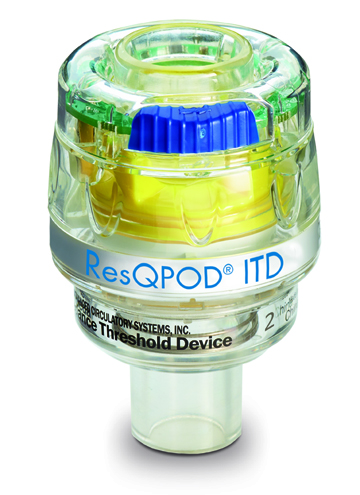Impedance Threshold Devices
Impedance Threshold Devices (ITDs) are designed to aid rescuers in enhancing circulation for patients receiving assisted ventilation during CPR.
ITDs, such as the ResQPOD®, lower intrathoracic pressure during the recoil phase of CPR by selectively restricting unnecessary airflow into the chest. This vacuum increases preload, lowers intracranial pressure (ICP), and improves blood flow to the brain and vital organs.
How IPR therapy works
When patients experience shock or, in extreme cases, cardiac arrest, they require enhanced blood flow to provide sufficient oxygen to vital organs. One way to improve outcomes in states of low blood flow is to enhance negative pressure in the chest by using intrathoracic pressure regulation (IPR), an innovative therapy that leverages the body’s own physiology to improve cardiac output and blood flow to the brain.
The human body is continually regulating circulation of blood by using positive and negative pressures inside the chest. This regulation acts like a bellows. When we inhale, a negative pressure (or vacuum) is created in the chest. This vacuum pulls air into the lungs and blood into the heart, and also slightly lowers pressure in the brain. When we exhale, a positive pressure is created in the chest. This positive pressure forces air out of the lungs, diminishes blood return to the heart, and slightly raises pressure in the brain.
Studies have shown that when combined with high-quality CPR, the ResQPOD ITD can:
- Double blood flow to the heart1
- Increase blood flow to the brain by 50%2
- Increase survival from cardiac arrest by 25% or more3

1. Langhelle, et al. Resuscitation. 2002;52:39-48.
2. Lurie, et al. Chest. 1998;113(4):1084-1090.
3. Yannopoulos, et al. Resuscitation. 2015;94:106-113.